Textured plaster: types and applications
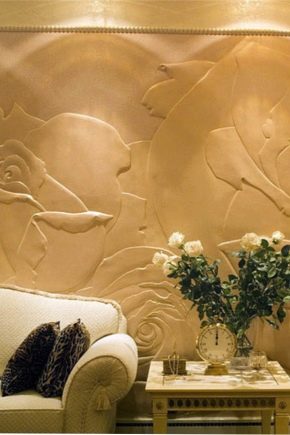
Textured plaster is a popular finishing material, which is actively used to decorate premises both inside and outside. With its help, you can realize a wide variety of design fantasies. To choose the most suitable version of this substance, you need to know what textured plaster is, what are its types and methods of application.

What it is?
Textured plaster is a mixture with a non-uniform viscous consistency, which is intended for decorative finishing of premises. It can include various fillers that function as viscous elements. Small stones, sand, crushed brick, gypsum, wood fibers or other elements are used as additives. Each version of the finishing material creates an individual texture, allowing you to eliminate visible imperfections on the walls and ceiling. When starting to work on the design, it is necessary to analyze all the advantages and disadvantages of this material in order to obtain the desired effect as a result.

Peculiarities
Like any other finishing material, textured plaster has its own characteristics:
- lack of toxic substances in the composition;
- ease of use;
- elastic consistency;
- resistance to fire and mechanical stress;
- resistance to moisture and sudden changes in temperature;
- excellent sound and heat insulation qualities;
- impeccable functionality and practicality.
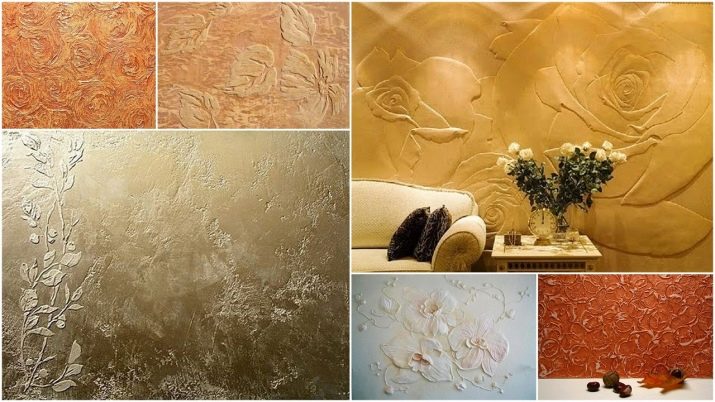





The appearance of the surface depends on the grain size of the mixture, as well as the characteristics of the tool used and can create roughness, grooves or other decorative marks. This material is considered universal, as it can be applied to absolutely any surface, creating beautiful and original decorative elements on it.
Views
Before proceeding with the process of creating external or internal decoration of the room, you must choose the appropriate option for the finishing material.
The main types of textured plaster include:
- Acrylic. It is based on acrylic resin. It is presented on the market in plastic containers of different sizes. Does not require dilution, as it is completely suitable for use. It is recommended to use the entire mixture at once, but if necessary, it can be stored in a closed container.




- Silicate. Liquid glass is used as a binder. This mixture is distinguished by impeccable vapor permeability, therefore it is actively used for finishing concrete. It has an increased level of resistance to mechanical stress, keeping its original appearance for many years.




- Silicone. The main component of such plaster is polymer resin, which creates the necessary level of protection for the walls from moisture and sudden changes in temperature. It can be used indoors and outdoors, as well as a decor for stoves.




- Mineral. For its manufacture, components such as lime and concrete are used, which can be supplemented with sand, quartz or other minerals. It is produced in the form of a powder and requires additional dilution with water until a homogeneous mass is formed.

On the modern market there are different types of decorative plaster, each of which has its own characteristics. Among the large assortment there are both liquid and dry textured mixtures. It can be volumetric, roller or structural, since the texture composition of each type is developed individually. VGT textured plaster is in great demand, which is characterized by economical consumption and a high level of efficiency.

Packaging
All textured mixtures are supplied in the form of a dry powder or a ready-made solution. Packages weighing 25 kg are considered the standard, but there are also other weight categories. Dry options are relatively cheaper in cost, and can also be stored for a long time in a closed container. Preparation of a solution with the desired consistency will not become difficult if the instructions are strictly followed. At the same time, it is much more difficult to transport these mixtures due to possible damage and inconvenience of packaging.




A more convenient option is considered to be textured plaster in the form of ready-made solutions. It is packed in special plastic containers equipped with handles for easy transportation. By weight, containers with a ready-made mixture of 25 and 16 kg are most often found. Products in this form are resistant to moisture and have a shelf life of 12 months.
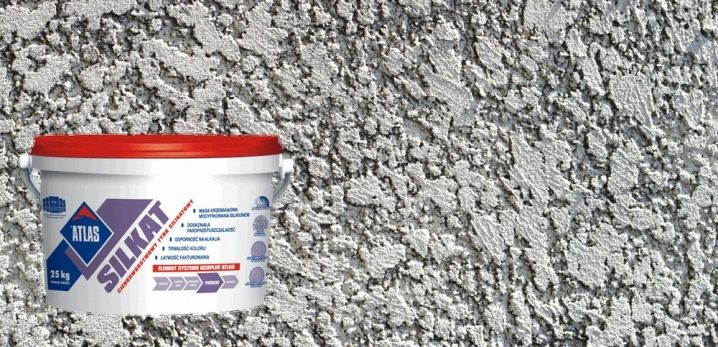
Colors
For the correct and beautiful design of the space, it is important to carefully consider the choice of colors used in the process of decorating the room. It should be noted that textured plaster is presented on the world market in a wide variety of colors, among which there is both white and color mixture. In the selection process, it is recommended to take into account the fact that the same finish color may look different on different textures.

Decorative plaster can have the following texture options:
- Matte. Creates a rough and fine-pored surface, on which the color of the texture is displayed equally beautifully from all sides.
- Shiny. The smoothest possible surface, the color clarity of which is visible only in one direction. From other angles, the color of the wall or ceiling will look somewhat distorted.
- Glossy. Differs in the presence of glare, which can affect the perception of the color scheme of the finish.



Professional designers recommend taking into account when choosing the fact that on a textured surface, the color will always be much darker than on a smooth texture.
Required tools and mixtures
In order for a surface with a textured finish to be of high quality and durable, as well as to have a presentable appearance, it is necessary to use a complete list of tools and high-quality compositions in the process.
To complete the workflow you will need:
- textured mixture;
- spatulas of different sizes;
- rollers, brushes and paint;
- trowel;
- grater;
- level and plumb line;
- masking tape;
- additional devices for creating texture.
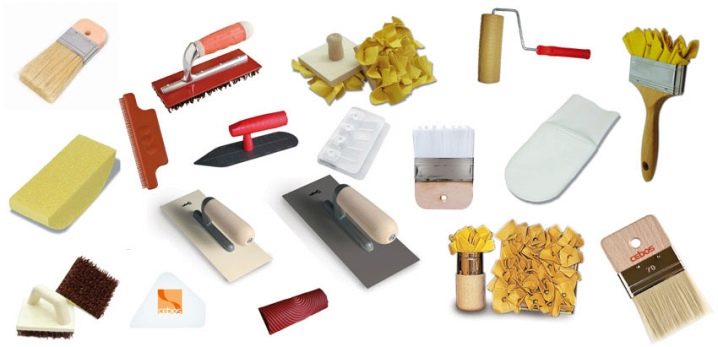
All these tools and mixtures will allow you to create the highest quality and most beautiful surface, taking into account all your wishes and needs.
Style and design
Textured plaster is quite diverse. Depending on the design idea, it can be used to create a wonderful background, support the overall style of the interior, or give a particular area of the room a special flavor. The versatility of this finishing material makes it widely demanded when decorating space.

Using a textured texture, you can create:
- imitation of natural stone;
- beautiful reliefs, patterns and drawings;
- the structure of wood, concrete, fabric, leather or paper;
- ideal base for wall painting;
- original wall panels.




In terms of structure, facade plaster is of the following types:
- "Lamb";
- "Bark beetle";
- "fur coat";
- plaster paint.




The variety of this material contributes to its use in a variety of stylistic directions.For finishing buildings outside, textured plaster with a bark beetle effect or under a fur coat is most often used. In appearance, it is relatively rough, so it is rarely used indoors.

The decor of the walls or ceiling with imitation of Turkish leather, fabric, stone and natural wood looks original. The pearl plaster, as well as the decorative flowers and sea waves created with its help, add sophistication and romance to the room.

Very often, textured plaster is used in the loft style. As an ideal base for painting, it is actively used in the American and Scandinavian styles. Also, this finishing material perfectly complements many other design directions, making the interior more stylish and original.

Application methods and options
For different types of premises, certain options for finishing with textured plaster are provided. Each option is able to transform the appearance of the interior, making it truly unique and unrepeatable.
There are two methods for creating decor using this material:
- Creation of patterns using special tools. This option is less costly and easy, therefore it is in great demand.
- Application of an ornament using a textured roller. This technique allows you to create a clear and neat pattern with a uniform texture.

Also, in order to create a pattern on a certain surface, ready-made stamps are often used. By applying them to a plastered wall, you can get a very beautiful drawing or ornament. Immediately after the end of the process of applying the texture, it needs to create conditions for complete drying, which lasts at least 24 hours. Only then can excess plaster be removed, primed and painted.

It must be remembered that in the process of creating such a decor, you should not penetrate deep into the base of the wall. After all, after the plaster has completely dried, the created decorative elements can simply disappear.
In rooms that are subject to frequent mechanical stress, it is recommended to cover textured plaster with wax or colorless varnish. This will preserve the original qualities of the material, its practicality and aesthetics.

In the kitchen
In order for the kitchen to be not only cozy, but also functional, you need to carefully consider the decoration of its walls and ceiling. Due to its excellent waterproofing and soundproofing qualities, as well as environmental friendliness and the absence of seams, textured plaster is an ideal solution for finishing this kind of premises. When decorating a kitchen interior using this finishing material the following recommendations of professional designers should be considered:
- Choose the right color palette. It should be in harmony with furniture, flooring and other accessories.
- Use plaster on one wall only. A great option for zoning a space or focusing on a specific wall.
- Use for ceiling decoration. A neat light ceiling will add freshness and lightness to the kitchen.

For small kitchens, it is better to use fine-grained textured plaster, and in larger rooms, it is recommended to use a mixture with a large relief. A protective layer of varnish or wax will help to ensure the durability and practicality of such a finish.

In the children's room
Due to its many positive features, textured plaster is considered an ideal material for decorating children's rooms. With the help of this versatile material, you can create almost any surface that will fulfill not only an aesthetic function, but also a practical one. Using special stencils, it is possible to apply a wide variety of patterns to the walls or ceiling.Design in the form of sea waves, clouds, geometric patterns, cartoon characters and other interesting images is in great demand in children's rooms.

It is better to give preference to options with an increased level of wear resistance. If you need to change the interior, you just need to repaint the walls and ceiling to get a completely new design. In some cases, textured plaster is used as a protective layer that is applied to the surface of children's furniture. This approach contributes to the preservation of its original qualities for many years.

In the bedroom and study
Since textured plaster is quite resistant to fading and delamination, it is actively used to decorate walls in bedrooms and offices. Its texture, color and thickness can be very different, depending on the wishes and preferences. Using this mixture and special tools, you can create a unique design in the bedroom, as well as hide any irregularities or other imperfections.

When starting the process of decorating an interior in a bedroom, it is necessary to take into account the amount of its space. In small rooms, it is recommended to use light shades, and in larger rooms, dark shades in the form of certain accents will be appropriate. In bedrooms with large volumes, a combination of several shades and types of textured plaster is allowed, which are harmoniously combined with each other, maintaining the coziness of the atmosphere.

For a north-facing bedroom, beige, coffee, pink and orange are recommended. Rooms with good natural light are best decorated in greens, blues, grays and reds.

Carrying out the process of decorating a home office, you should adhere to a strict and restrained style. The design of the wall and ceiling decoration should be combined as much as possible with furniture and other interior items. The cabinet looks stylish and beautiful with antique finishes, concrete, brick and velvet. Each option is attractive in its own way and creates a favorable atmosphere for the work process.

In the corridor
Decorating a corridor or hallway requires a special approach. After all, it is the corridor that creates the first impression of the house, as well as its owners. It should be noted that here the walls are subjected to daily stress, which can cause dirt, scuffs and chips. Therefore, when choosing textured plaster, it is recommended to give preference to durable and most practical options.

With the help of this finish, you can create a unique design of the corridor with a clearly defined relief surface that imitates natural wood, stone or other materials. It is quite easy to take care of such a finish, which allows you to maintain its original appearance for many years. In addition, a stylish and neat corridor can make a good impression on guests and become a real hallmark of the house.

Manufacturers and reviews
On the modern market, there is a wide range of textured plaster from a variety of manufacturers. Each of these options has its own individual characteristics, and is also characterized by certain customer reviews.

The most popular manufacturers of such finishing materials include:
- Ceresit. German brand specializing in the production of universal plasters. Their main advantages are complete environmental friendliness, as well as increased resistance to abrasion, mechanical stress and mold formation. Buyers value this material for its durability and affordable cost.

- Knauf. A German brand that produces high quality textured plaster for indoor and outdoor use. Customer reviews indicate that such a finish dries quickly and perfectly hides obvious imperfections on the surface of walls or ceilings.

- VGT. Russian manufacturer of plastering compounds, with which you can create a truly unique texture and make the interior more saturated. In their reviews, buyers focus on affordable prices and a wide range of products.

- San Marco. Textured plaster made in Italy, which rightfully belongs to the premium segment. Its assortment consists of 30 varieties, each of which allows you to create a unique texture. Customers appreciate the products of this brand for their excellent quality and wide color palette.

- Bayramix. Russian manufacturer of textured plaster, which includes marble chips. The material is considered a budget option, due to which it is in demand when decorating premises both inside and outside. The assortment includes mixtures with different fractions and levels of elasticity.

- Parade. A well-known Russian manufacturer that uses Spanish and German automated lines in the production process. One of the most popular areas of its activity is the Lakra brand. All products are presented in the form of ready-to-use mixtures. Buyers note that the plaster of this brand is characterized by impeccable quality, affordable cost and economical consumption.

- Dufa. German brand, which assortment includes 18 varieties of textured plaster. Almost all specimens are intended for indoor use. Buyers in their reviews focus on the absence of an unpleasant odor in these formulations, as well as a variety of textures and ease of application.

- Bolix. Polish brand, whose products include 24 types of different plaster mixes. Buyers claim that this texture is ideal for finishing corridors, facades or auxiliary rooms.

- Derula. A German-Russian manufacturer, whose textured mixtures are made on the basis of metallized pigments, due to which each variant is characterized by a special effect. Customer reviews indicate a large selection of textures and good quality products.

- Alpina. A German trade mark, the textured plaster of which is used for indoor and outdoor work. These solutions are characterized by resistance to adverse factors of influence and durability. Buyers appreciate the texture of this brand for its practicality, functionality and high quality.

- Bolars. A Russian manufacturer that produces high quality textured plaster that meets the latest European standards. The assortment includes 12 types of mixtures with different efficiency. In reviews, buyers note an increased level of resistance to moisture, as well as ease of use.
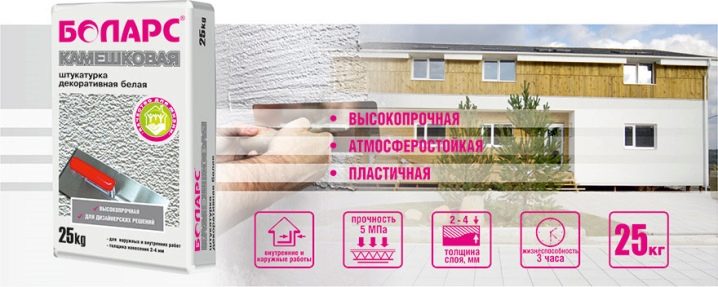
- "Optimist". Russian brand, the assortment of which is 40 different textured compositions. All products are packed in high-quality containers, which makes the application process as convenient as possible. Buyers note the impeccable quality of products, economical consumption and affordable cost.

All of these manufacturers occupy high positions in the popularity rating. The products of each of them fully comply with international norms and quality standards, due to which they are in great demand among buyers.
Tips & Tricks
Textured plaster is the optimal solution for wall decoration both inside and outside the room. With its help, you can create almost any texture on a particular surface.
When starting to decorate the interior, you must take into account the following tips and recommendations of professional specialists:
- Apply textured plaster on a slightly rough surface so that the solution can be well fixed.
- It is better to opt for ready-to-use formulations.If there is a need for independent production of mixtures, then first of all you need to carefully study the instructions on the package and only after that start the process of making the solution.
- In the process of work, use only tools, rollers and brushes specially designed for this purpose.
- After applying the plaster, it should be left for 24 hours until it dries completely.

Adhering to such simple recommendations, you can create a truly unique interior in a residential or public space based on personal wishes and preferences.
For information on how to apply textured plaster, see the next video.













The comment was sent successfully.